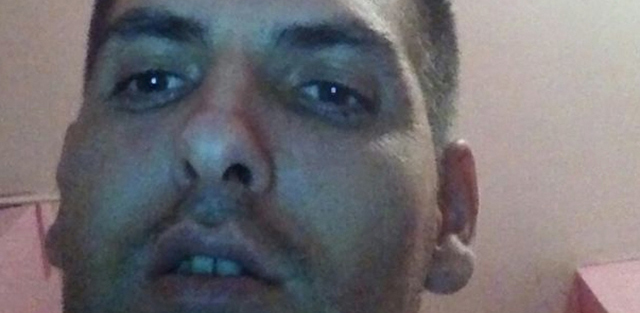Taking a photo of yourself while inside someone else’s house illegally might not be the first, second, or even third thing you’d think to do — especially when using your victim’s own camera or mobile phone — but, hey, you’re probably not a burglar. Taking pics of yourself while holding your victim’s property is probably also not something you’d want to do — and you’d almost definitely not then post those photos to your victim’s Facebook page. But, again, you probably don’t think — if that’s what this can be called — they way burglars do.
Yet that’s no reason not to take pleasure in other people’s ill-considered digital actions and the apparently irresistible pull of the criminal self-portrait — so let’s take a quick look at some examples of burglars taking selfies.
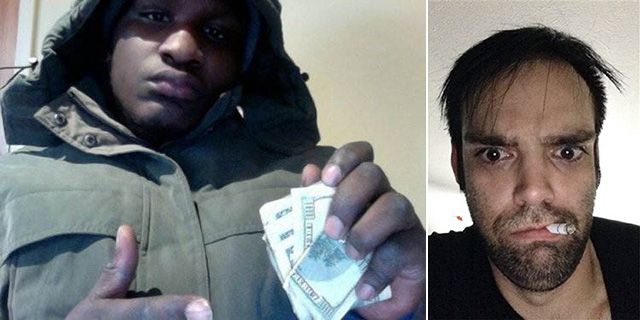
A Self-Portrait of the Burglar as a Young Man
Burglars taking selfies — and being caught because of those very self-portraits — are a surprisingly common story. But they were in the news again last night when the face of the gentleman seen on the right side of the image, above, popped up in the iCloud account of a gym in Colorado. Taken with an iPad stolen from that same gym, the selfie gave local police a possible suspect in the iPad theft.
“Police are investigating whether a man who apparently snapped a selfie with an iPad reported as stolen from a Colorado gymnastics studio played a role in its disappearance,” we read. “A picture of the dark-haired, bearded man with a cigarette clamped in his mouth appeared Saturday in Premier Gymnastics’ iCloud account, its collection of data stored on remote servers and available online.”
This is similar to the story of the man seen in the lead image of this post, a burglar in the English town of Kenilworth whose selfie popped up in the Amazon account of the man from whom he had just stolen a Kindle. “Among the items stolen,” the Coventry Telegraph explains, “was a Kindle Fire, together with a quantity of jewellery and an iPod. The owner of the stolen Kindle later bought a new Kindle and when he activated his account he found a photograph in his account of an unknown male, which had been taken just a couple of hours after the burglary took place.”
Like a face from nowhere — a spirit, a ghost — this man’s curious visage was there waiting for the new Kindle owner, unaware that his crime had been secretly synced across devices.
After all, sometimes it’s the objects themselves that will most immediately betray any of you burglars out there, a statement to which this stolen laptop surreptitiously photographing its new home in Tehran can attest. In an age of networked objects, data — whether geolocation and selfies all — will flock back like homing pigeons to the cloud accounts that rule them.
Just ask the women who stole an iPad, then unknowingly uploaded pictures of themselves to the owner’s photo stream, or the infamous case of Nelson. Nelson, you might remember, was a Disney Cruise employee who used the iPhone he had just stolen from a passenger “to document his life — but, unbeknownst to him, those pictures were automatically sent to the owner’s computer at home through iCloud, giving her the evidence she needed to get the phone back. I guess Nelson was clever enough to steal a phone but not wise enough to wipe it.”
In any case, the man in the left side of the image above was particularly… let’s say clever. After robbing a family in Washington DC back in 2011, he took a picture of himself while still in their house, using the son’s computer no less, holding the family’s cash. If that sounds brazen — or idiotic — consider that he then posted that photo to the son’s Facebook page, bragging about the theft. The father, it turns out, was a local newspaper reporter. The burglar was soon arrested.
According to a blog post about the experience written by the newspaper-reporter father, the 19-year-old burglar “felt compelled to showboat about his big achievement: He opened my son’s computer, took a photo of himself sneering as he pointed to the cash lifted from my son’s desk, and then went on my son’s Facebook account and posted the picture for 400 teenagers to see. In the picture, the man is wearing my new winter coat, the one that was stolen right out of the Macy’s box it had just arrived in.”
Compare this, for example, to a story from Iowa City, where “a burglary suspect was nabbed by police after he uploaded photos of himself to the victim’s Facebook page using the victim’s stolen iPod.” Lest you forget that this is the 2010s, the man was eventually tracked down and pepper-sprayed.
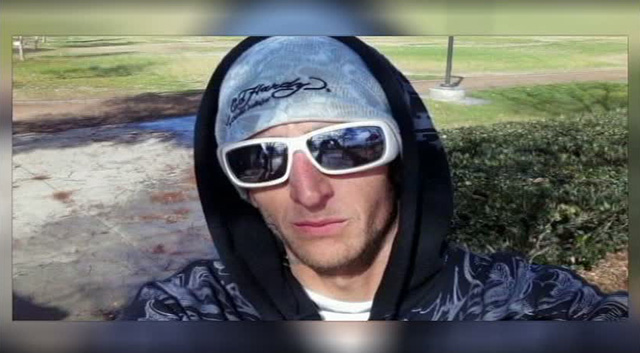
Other times — like when you’ve got your Ed Hardy hat on and you’re preparing to rob a church — there can be very few things more invigorating than to take a selfie. It gets you in the mood. It proves you’re badass. And that’s what got this 26-year-old man from Chula Vista, California, seen in the selfie above, arrested.
“A ‘selfie’ found in a cell phone dropped during the ransack burglary of a Chula Vista church has led to the arrest of the man in the picture and two other suspects,” the Los Angeles Times reported. “The phone was found at the scene of the break-in at Hilltop Tabernacle Church in which cash, a laptop computer and other items were taken, Chula Vista police said.”
To be fair, the self-portrait was not taken at the scene of the crime — but here’s a pro tip: you don’t want to break into a building while carrying incriminating pieces of ID, even if just’s a selfie on a mobile phone.
And especially not if it’s your birth certificate.

Of course, it’s not just Americans who want to snap photos of themselves under criminal circumstances. Across the pond in Plymouth, England, for example, “a man who was burgling a house stopped to take a photo of himself on the victim’s mobile phone“.
According to the BBC, the photo, seen above, “shows the man sitting at the dining table of [a] woman’s home in the Barbican area of Plymouth, Devon. She was unaware the man had been in her home until she discovered the photo on her phone.” In fact, the woman “believes she was in the shower when the man took the photo as her handbag is visible and she never leaves the house without it.”
This was similar to a slightly stranger case last month in Denver, when a woman was getting ready for bed only to find a selfie waiting for her on her cell phone. It was the hipster-lite gentleman seen on the left side of the double-image, below. Was he a burglar? Well, he was a trespasser, certainly: “Police said the man came into the home through the back door, took the picture and left without taking anything.”
I mean, what better why to get away with a crime than to leave a self-portrait for police to study and send around to local news organisations?
Perhaps it was all just part of the Selfie Olympics.
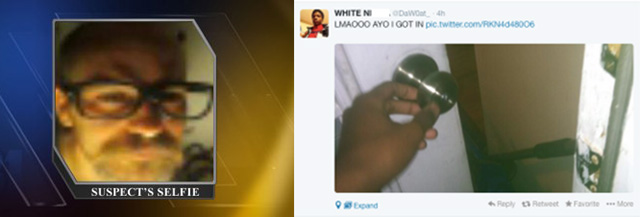
But the obsessive urge to document one’s own daily actions in this age of easily portable digital media does not just extend to self-portraiture.
Photographing — and live-tweeting — the act of breaking into a house, as in the image seen above, to the right, got one man arrested, and he even continued to document his arrest via Twitter.
Indeed, he “not only gave a live play-by-play of him breaking into a home to his Twitter followers, he gave a play-by-play description of his arrest,” we read.
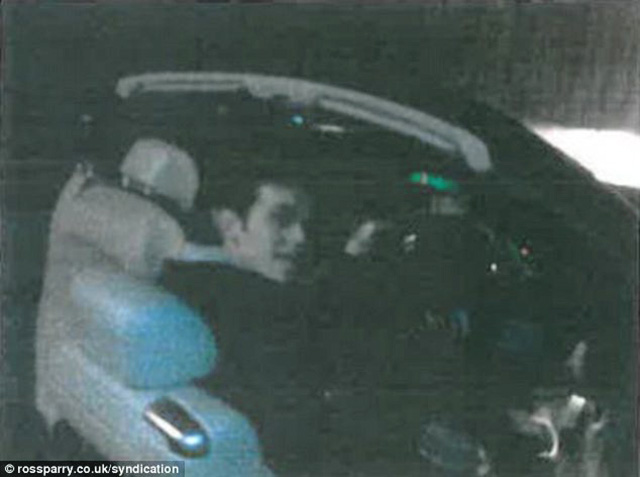
Or maybe you can technically skip the selfie part of this by getting your accomplice to take a photo for you — for example, just sitting in the front seat of a luxury car you’ve stolen, including a second photo, taken moments later, that actually shows the car’s licence plate. Some criminals apparently want to do the forensic work for us.
In this case, the automotive grand thief “kept the incriminating images on a memory stick, which he desperately tried to flush down the toilet when police raided his home in Leeds.”
In any case, the parade of self-portraits continues, photos of faces staring back blankly, often cluelessly, as their data zips off across the ether to pop up again in a rogue’s gallery of burglars and thieves, or lying in wait inside a device stupidly left behind at the crime scene. It’s as if the impulse to document oneself is so strong, so impossible to resist, that considerable jail sentences are considered a worthy price to pay for capturing that last and greatest selfie, an image to top them all no matter the consequences.
Will future art historians look back at these years as an unexpected boon for criminal self-portraiture — the tools of representation finally handed down to the unrepresented and the overlooked, a kind of Jean Genet of the JPG, the subaltern clicking madly away on a stolen mobile phone — or will this passing fad for imbecilic self-incrimination come to a long-overdue halt as burglars finally realise taking pics of themselves on stolen cameras, at the scene of the crime, is probably not a good idea?
Pictures: Kenilworth Police / Daily Mail / Loveland, Colorado, Police / San Diego Police / Devon and Cornwall Police / Denver Police / WordOnDaStreet.com / Daily Mail
